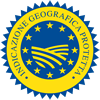Description
The Vitela de Lafões PGI is veal produced from calves that are still suckling, which are crossbreeds of the two native breeds, Mirandesa and Arouquesa.
Production Area
Vitela de Lafões PGI is produced in the municipal areas of Oliveira de Frades, Vouzela, São Pedro do Sul, Sever do Vouga, Viseu and Castro Daire, in the Viseu district.
Production Method
the animals are raised in barns and feed on mothers' milk. Their feed can be supplemented with hay, seasonal vegetation or corn flour concentrates produced on the same farm. The calves are slaughtered at between five and seven months old. The carcasses are hung for about five days.
Appearance and Flavour
Vitela de Lafões PGI is light pink in colour with evenly distributed white fat. It has a regular consistency, is slightly moist and succulent. The flavour comes from the natural vegetation on which the cattle feed.
History
Vitela de Lafões PGI comes entirely from family run businesses in the sub region of Lafões. This region is an enormous green basin crossed by the Vouga, Douro and Tâmega rivers. The local population live on agriculture and rearing livestock, particularly cattle and especially the traditional Vitela (veal). Already in the 19th century the quality of this meat was well-known, so much so that it was recorded in detail in an 1858 document by Bernardo Silvestre Lima for the state rural archives.
Gastronomy
Vitela de Lafões PGI must be kept at a low temperature which should not exceed 2°C. It is never frozen. Vitela de Lafões PGI is used abundantly in the local traditional cooking, such as in the dish vitela assada em forno de lenha (roast in a wood oven) or in vitela assada à moda de Lafões ( spit roasted veal, covered in sea salt and a white wine sauce, eaten with boiled or fried potatoes and slices of raw onion).
Marketing
This veal is sold as Vitela de Lafões PGI. It is sold whole or in prepacked cuts and joints in suitable packaging materials.
Distinctive Features
The distinctive geographic features of this area are the great twists and turns of the rivers and the depth of the river beds. The particular geomorphic composition and the mountain climate, with its strong influences from the Atlantic, generate a micro-climate which is ideal for agriculture and livestock. This micro-climate gives exceptional organoleptic qualities to the local produce, some of which having become truly symbolic of the area, such as in the case of Vitela de Lafões PGI and Vinho de Lafões.






